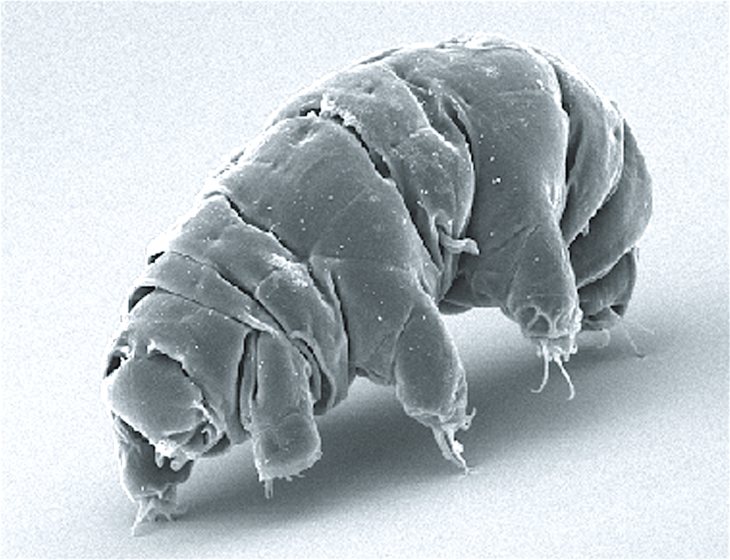Tiny teachers: how water bears have inspired the Trust to develop more resilient systems
For the past 18 months the Trust has had an unusual interest in water bears. Joanna Long and Jamie Fisher explain why.
Water bears (or tardigrades) are microscopic creatures that live in mosses, algae and lichens. They have eight legs, a mouth and two eye-like cells that help them to see. Their bulky bodies and stout legs make them look a little bit like bears.

Water bears are also famously hardy. They have been around for more than 500 million years, they can survive in extreme temperatures and they have been found at the bottom of the ocean and the highest mountain slopes. This incredible resilience has been an inspiration to us here at the Trust and something we have been working to emulate.
We’ve been transforming the way we work so that the Trust can be as resilient as the water bear and continue to protect and restore wildlife in Scotland through all the highs and lows that come our way.
Before you ask, no we haven’t relocated to the floor of the Atlantic or the north face of Ben Nevis.
Rather, we’ve been transforming the way we work so that the Trust can be as resilient as the water bear and continue to protect and restore wildlife in Scotland through all the highs and lows that come our way. What better name for this journey than Project Water Bear.
The transformation at the heart of Project Water Bear is fundamentally digital and has happened in two strands.
Money bear
The first strand of Project Water Bear focused on the Trust’s financial processes. We have transformed what were once paper-based systems into digital ones, with automated pathways along which orders and payments travel on route to being approved and paid in a timely and efficient manner.
Underpinning all of this is an upgraded core finance system and enhanced coding (both delivered as part of Project Water Bear) making it easier for the Trust to plan, monitor and evaluate our activities. It’s also allowing us to capture more data about our carbon footprint, giving us a fuller picture of our impact and our progress towards reducing it.
Data bear
The second strand of Project Water Bear addressed how we manage information more generally. This has involved asking uncomfortable questions like ‘what information do we have?’, ‘do we need all of it?’, ‘where is it stored?’, ‘who has access to it?’, ‘who should have access to it?’, ‘what security do we have in place?’ and ‘how would we know if our information has been breached?’
As a result of Project Water Bear we can be confident that we have the answers to these questions.
Future bear
We’ve made huge leaps forward in the last 18 months but this is only the start. What’s really happened is a cultural shift towards more secure, more transparent, more joined-up, more efficient, more effective information management. In the process, the Scottish Wildlife Trust as a whole has become more like our tiny friends the water bears: resilient and ready to meet the challenges of the future.
Joanna Long, Finance Project Manager & Jamie Fisher, Digital Infrastructure Project Manager
Project Water Bear was funded by a grant from the National Lottery Heritage Fund.

Help protect Scotland’s wildlife
Our work to save Scotland’s wildlife is made possible thanks to the generosity of our members and supporters.
Join today from just £3 a month to help protect the species you love.
Preface
For the past 18 months the Trust has had an unusual interest in water bears. Joanna Long and Jamie Fisher explain why. Water bears (or tardigrades) are microscopic creatures that …
